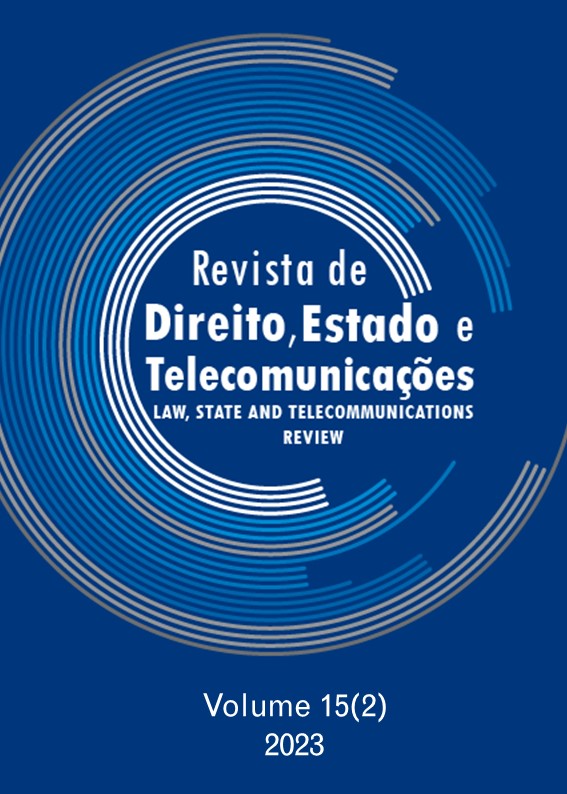Identity of the Suspect in Cyber Sabotage
DOI:
https://doi.org/10.26512/lstr.v15i2.44518Palabras clave:
Criminal Identity. Forensic Characteristics. Cybercrime. Prevention. Cybercrime.Resumen
[Purpose] The purpose of the study is to identify means and measures to counteract and prevent cyber sabotage.
[Methodology] The research is based on a systematic approach and logical tools (description, analysis, synthesis, induction, deduction, etc.). Special scientific, general scientific, and philosophical methods are applied.
[Findings] The study analyses the possible motives of the suspect in cyber sabotage and unifies classification approaches. Attention is focused on information support for the interrogation of a suspect in cyber sabotage by an investigator to learn the identity of the suspect. Certain features of the sources of obtaining information about a person suspected of committing cyber sabotage are noted. The general characteristics and features of the identity of a cyber sabotage suspect cannot be considered outside the context of other socially dangerous attacks in cyberspace. The development of mechanisms for countering cybercrime in Ukraine continues.
[Value] The practical significance of the study is determined in the list of measures and means proposed by the authors to reduce the risk of cyber sabotages and eliminate their harmful consequences.
Descargas
Citas
Aikov, D., Seiger, K. & Fonstorch, W. (1999). Computer crimes: A guide to combating computer crimes. Moscow: Mir.
Bilenchuk, P. D. (2001). Questions of social and criminological characteristics of a computer criminal. State and Regions, 4, 16-22.
Borysova, L. (2006). Subject (person) of transnational computer crime: forensic and psychophysical aspects. Current Issues of State and Law, 1, 76-81.
Borysova, V. I., Ivanova, K. Y., Iurevych, I. V. & Ovcharenko, O. M. (2019). Judicial protection of civil rights in Ukraine: National experience through the prism of European standards. Journal of Advanced Research in Law and Economics, 10(1), 66-84.
Cherniavskyi, S.nS., Holovkin, B.nM., Chornous, Y.nM., Bodnar, V.nY. & Zhuk, I.V. (2019). International cooperation in the field of fighting crime: Directions, levels and forms of realization. Journal of Legal, Ethical and Regulatory Issues, 22(3), 1-11.
Chernikov, B. Y. (2018). Criminological characteristics of cybercrime. Young Scientist, 11(63), 941-944.
De Fréminville, M. (2020). Cybersecurity and decision makers: Data security and digital trust. Wiley: ISTE
Denysova, O. O. (2003). Information systems and technologies in legal activity. Available at: http://ukrkniga.org.ua/ukrkniga-text/817/.
Dovzhenko, O. Y. (2019). On the question of tactics of interrogation in cybercrime cases. Scientific Bulletin of the International Humanities University, 37, 143-145.
Getman, A., Karasiuk, V., Hetman, Y. & Shynkarov, O. (2019). Ontological representation of legal information and an idea of crowdsourcing for its filling. Advances in Intelligent Systems and Computing, 836, 179-188.
Government Portal. In 2020, the National Police exposed more than 5000 cybercrimes. Available at: https://www.kmu.gov.ua/news/u-2020-mu-nacpoliciya-vikrila-ponad-5-000-kiberzlochiniv.
Gvozdetska, M.O. & Izmaylov, K.Yu. (2016). Criminological characteristics of cybercrime: Current state, structure and specifics of committing. Current Challenges and Achievements in the Field of Cybersecurity, 2, 52-53.
Ivanchenko, O. Y. (2019). Criminological characteristics of cybercrime, prevention of cybercrime at the national level. Actual Problems of Domestic Jurisprudence, 3, 172-177.
Karachka, A. F. (2017). Technologies of information protection. Ternopil: National University of Economics.
Kozak, N. S. (2013). Forensic characteristics of persons who commit computer crimes. Scientific Bulletin of the National University of the State Tax Service of Ukraine (Economics, Law), 2(61), 186-191.
Kranenbarg, M. W., Ruiter, S. & Van Gelder, J. L. (2021). Do cyber-birds flock together? Comparing deviance among social network members of cyber-dependent offenders and traditional offenders. European Journal of Criminology, 18(3), 386-406.
Lutsenko, O. (2017). Bringing civil servants to liability for disciplinary misconduct in judicial practice of Ukraine, Poland, Bulgaria and Czech Republic. Journal of Advanced Research in Law and Economics, 8(1), 103-112.
Maliy, M. I. & Bilenchuk, P. D. (2019). Cyberspace in the new millennium. Who are they: cybercriminals? Available at: https://cutt.ly/UZmm0d9.
Mayer Lux, L. & Vera Vega, J. (2020). The crime of cyber espionage: Definition and delimitation. Revista Chilena De Derecho y Tecnologia, 9(2), 221-256.
Peleshchak, O. R. (2021). Survey of the premises in the investigation of cyber diversions. Madrid: Barca Academy Publishing.
Pushina, N. L. (2020). Forensic characteristics of a person who commits criminal offenses in the field of economic activity with the use of computer technology. Scientific Notes of TNU named after V.I. Vernadsky, 31(70), 121-126.
Rychka, D. O. (2019). Peculiarities of the criminal-law qualification of crimes in the sphere of the use of electronic computers, systems and computer networks and telecommunication networks. Dnipro: University of the State Fiscal Service of Ukraine.
Shepitko, V. Y. & Zhuravel, V. A. (2017). Innovative principles of technical and criminalistic support of the activity of criminal justice bodies. Kharkiv: Apostil.
Shkolnyi, V. B. (2012). Some reasons for the emergence and development of crime in the use of computers. Law and Society, 2, 222-227.
Shulzhenko, N. & Romashkin, S. (2021). Types of individual criminal responsibility according to article 25 (3) of rome statute. Juridical Tribune, 11(1), 72-80.
Tacij, V. J., Tjutjugin, V. I. & Grodeckij, J. V. (2014). Conceptual model establish responsibility for offense in the legislation of Ukraine (draft). Criminology Journal of Baikal National University of Economics and Law, 2014(3), 166-183.
Titunina, K. (2006). Characteristics of computer crimes committed using the Internet (analysis of questionnaires). Fight against Organized Crime and Corruption, 21, 307-313.
Yakimova, S.V. & Borovikova, B.C. (2016). Personality of an economic criminal. Bulletin of the National University Lviv Polytechnic, 837, 521-527.
Descargas
Publicado
Cómo citar
Número
Sección
Licencia
Derechos de autor 2023 Law, State and Telecommunications Review

Esta obra está bajo una licencia internacional Creative Commons Atribución 4.0.
Al enviar este documento a la Revista de Derecho, Estado y Telecomunicaciones,
declaro que estoy aceptando los términos de Creative Commons Attribution 4.0 International (CC BY 4.0)


